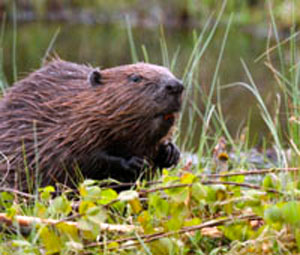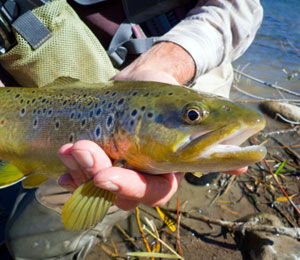Invasions and introductions…

The native community of the U.K. is limited when compared to continental Europe. The last Ice Age saw vast, thick glaciers covering much of Scotland and the Lake District, and all parts of the U.K. experienced a deep and long lasting arctic climate. Plants and animals could only repopulate the land as and when the glaciers retreated and the climate improved.
Such movement was possible whilst the U.K. was still connected to Europe (Doggerland see the blog on “Our Changing Flora” ). However, about 9500 BC, a giant flood broke through the ‘rock dam’ in the region of the Straits of Dover. The flood washed away billions of tons of material creating the English Channel and separating the U.K. from Europe.
 The plants and animals present at that time would represent our native fauna and flora (archaeophytes, plants that have been part of our flora for a long time). Since then additions to the fauna (and to an extent, the flora) have had to face the barrier of the sea, which has, been surmounted with human assistance either intentionally or inadvertently. Animals have been deliberately introduced for three main reasons
The plants and animals present at that time would represent our native fauna and flora (archaeophytes, plants that have been part of our flora for a long time). Since then additions to the fauna (and to an extent, the flora) have had to face the barrier of the sea, which has, been surmounted with human assistance either intentionally or inadvertently. Animals have been deliberately introduced for three main reasons
(a) Economic, such as the pheasant and rabbit, both offering food and the latter, also, fur for clothing. No rabbit bones are found at neolothic or iron age sites; nor is there any reference to the rabbit in the Domesday Book.
(b) Ornamental, such as the mandarin duck
(c) Sporting, the rainbow trout for angling.
Whether or not an introduced species survives and becomes naturalised (establishing a permanent breeding population) depends on many factors such as
- Finding a suitable habitat and empty niche
- Suitable food
- An absence of predators (or not too many)
- Their fecundity (number of offspring) in the ‘new’ environment / habitat
- The nature and number of the founder colony / individuals (if there are too few animals, then inbreeding can be too intense and recessive ‘lethal’ genes may be exposed).
In recent years, we have heard much of invasive species. This usually has negative connotations in that some harm is caused, or there can be damage (for example, Japanese knotweed or wild boar). In Sir Christopher Liver’s book ‘The naturalised animals of Britain and Ireland’ an invasive species is “one that has simply ‘invaded’, that is, entered a country” ;it may or may not be a threat to indigenous or native species, but perhaps more on that another time ........ .
Other terms that may be used in relation to various plant and animal species -
- An alien – this is a non-native or introduced species
- Feral - “animals that have lapsed into a wild form from a domesticated condition” according to the OED. To refer to mink as feral would be wrong as mink was never domesticated per se.
- An introduction – this refers to the release of a species into a country where it has not occurred within historic times.
- A re-introduction – this is the release by humans of a species into a country where it previously occurred (e.g. the beaver) but where it has since died out. Re-introductions may be part of the ‘rewilding’ of an area.
- Native – a species that is a natural member of the community in a given area / habitat
(*The naturalised animals of Britain and Ireland, Liver, C - New Holland 2009 : an interesting and informative read)
Comments are closed for this post.
Discussion
We are used to seeing rabbits everywhere in the countryside, but I read somewhere that they have only been in the wild for two hundred years. Before that, they were kept in warrens. Hard to believe that they wouldn’t have escaped, considering their tunnelling abilities.
[…] The rabbit – an introduced species. ~ by Lewis Whilst rabbit bones and teeth are found at various U.K. archaeological sites that date back to ‘warm’ inter-glacial periods, none have been found at Iron Age, Roman or even Anglo-Saxon sites. This suggests that the (European) rabbit did not survive the last Ice Age in the British Isles; therefore the rabbit is an introduced species (see previous blog / post). […]

See also http://www.woodlands.co.uk/blog/wildlife/the-rabbit-an-introduced-speci/
Lewis
17 May, 2011